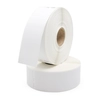Dymo RTK MSDS Chemical Hazard Labels with NFPA Diamond
- Buy 2+ Rolls $17.57 per roll -3%
- Buy 6+ Rolls $16.40 per roll -9%
- Buy 12+ Rolls $15.20 per roll -16%
- Buy 24+ Rolls $14.04 per roll -22%
- Buy 80+ Rolls $12.86 per roll -29%
Why Auto Order?
- No commitments - cancel at any time.
- Take 5% off all future eligible Auto Orders.
- Select your own schedule.
- Free shipping in the USA.
-
Details
- All of our LabelValue.com brand labels are available for full customization.
- Earn 18 Rewards Points with your purchase of this product today
Dymo RTK MSDS Chemical Hazard Labels with NFPA Diamond Description
These Dymo labels are Compatible with All 450 Series and Earlier LabelWriter Printers.
Dymo Compatible Right to Know (RTK) Labels with NFPA Diamond communicate the presence of hazardous chemicals to employees or emergency responders. Use these chemical hazard labels to quickly and easily identify and rank the severity of health risks, flammability, instability and special hazards.
Print Custom OSHA and GHS Labels
OSHA labels are an important part of the HCS, which is designed to protect workers from exposure to hazardous chemicals. By providing information about the hazards of a chemical, OSHA labels help employees to make informed decisions about how to handle and use the chemical safely.
GHS labels are an important part of the GHS, which is designed to protect people from exposure to hazardous chemicals. By providing information about the hazards of a chemical, GHS labels help people to make informed decisions about how to handle and use the chemical safely.
The National Fire Protection Association (NFPA) diamond is a highly recognizable system used to identify health and physical hazards associated with specific chemicals.
Originally developed to aid fire fighters during emergencies in industrial settings, today it is used on Right to Know (RTK) labels and HazCom in order to communicate the presence of hazardous materials.
Print Custom OSHA Labels
OSHA labels are used to provide information about hazardous chemicals in the workplace. They are required by the Occupational Safety and Health Administration (OSHA) Hazard Communication Standard (HCS).
OSHA labels must include the following information:
- Pictograms: Pictograms are symbols that represent the hazards of a chemical. There are 9 pictograms in total, each representing a different type of hazard.
- Signal words: Signal words are used to indicate the severity of the hazard. There are 3 signal words:
- Danger: Indicates a serious hazard that could cause death or serious injury.
- Warning: Indicates a hazard that could cause minor or moderate injury.
- Caution: Indicates a hazard that could cause irritation or minor health effects.
- Hazard statements: Hazard statements describe the specific hazards of a chemical. They are written in plain language so that employees can understand them.
- Precautionary statements: Precautionary statements describe how to handle and use a chemical safely. They also include information about first aid treatment if exposed to the chemical.
- Product identifier: The product identifier includes the name of the chemical and the manufacturer's name and address.
OSHA labels must be affixed to the immediate container of a hazardous chemical, or to the outside packaging if the immediate container is not large enough to accommodate the required information. They must also be legible and in English.
Here are some additional tips for understanding OSHA labels:
- Look for the pictograms. The pictograms will give you a general idea of the hazards of the chemical.
- Read the signal words. The signal words will tell you how serious the hazard is.
- Read the hazard statements. The hazard statements will describe the specific hazards of the chemical.
- Read the precautionary statements. The precautionary statements will tell you how to handle and use the chemical safely.
- If you have any questions about an OSHA label, ask your employer or a safety professional.
Custom GHS Labels
GHS labels, or Globally Harmonized System labels, are used to provide information about hazardous chemicals in a standardized way around the world. They are required by the Globally Harmonized System of Classification and Labeling of Chemicals (GHS), which was developed by the United Nations.
GHS labels must include the following information:
- Pictograms: Pictograms are symbols that represent the hazards of a chemical. There are 9 pictograms in total, each representing a different type of hazard.
- Signal words: Signal words are used to indicate the severity of the hazard. There are 3 signal words:
- Danger: Indicates a serious hazard that could cause death or serious injury.
- Warning: Indicates a hazard that could cause minor or moderate injury.
- Caution: Indicates a hazard that could cause irritation or minor health effects.
- Hazard statements: Hazard statements describe the specific hazards of a chemical. They are written in plain language so that anyone can understand them.
- Precautionary statements: Precautionary statements describe how to handle and use a chemical safely. They also include information about first aid treatment if exposed to the chemical.
- Product identifier: The product identifier includes the name of the chemical and the manufacturer's name and address.
GHS labels must be affixed to the immediate container of a hazardous chemical, or to the outside packaging if the immediate container is not large enough to accommodate the required information. They must also be legible and in the language of the country where the chemical is sold.
LV-30252RTK Specification
| Labels Per Roll | 350 |
|---|---|
| Width | 1.0950 " |
| Length | 3.5000 " |
| Label Material | Paper |
| Adhesive | Permanent |
| Color | White |
| Core Size | 1" |
| Perforation | No |
| 2-up | No |
| Minimum Order Quantity | 2 ct |







